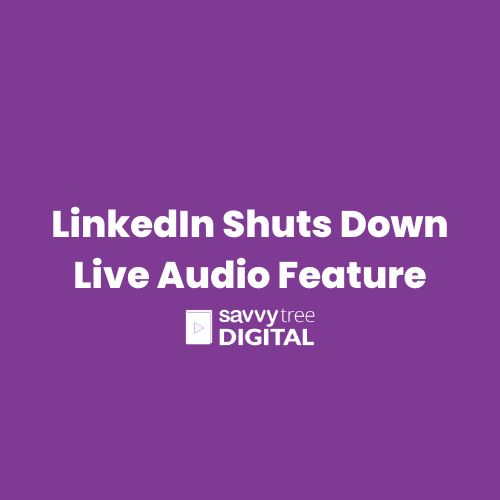In the wake of the COVID-19 pandemic, social media platforms scrambled to adapt to a world increasingly reliant on digital interactions. One such innovation was the rise of live audio features, allowing users to engage in real-time conversations and discussions. LinkedIn, the professional networking platform, was no exception. It launched its own live audio feature in 2022, hoping to capitalize on the growing trend and offer a new way for professionals to connect and share knowledge.
However, just two years later, LinkedIn has announced the discontinuation of its standalone live audio events. Starting December 2, 2024, users will no longer be able to create new audio-only events. Existing scheduled events will be removed after December 31, 2024, unless transitioned to LinkedIn Live.
Why the Sudden Shift?
While LinkedIn hasn’t explicitly stated the reasons behind this decision, several factors likely contributed to the demise of its live audio feature:
- Limited User Engagement: Despite initial enthusiasm, it seems that live audio events on LinkedIn failed to gain significant traction. User engagement rates may have been lower than expected, leading the platform to reevaluate its priorities.
- Technical Challenges: Live audio features can be technically demanding, requiring robust infrastructure and reliable streaming capabilities. LinkedIn may have encountered difficulties in maintaining a seamless user experience for its live audio events.
- Shifting User Behavior: As the pandemic restrictions eased and in-person interactions resumed, user behavior on social media platforms began to change. The novelty of live audio may have worn off, and users may have returned to more traditional forms of communication.
- Competition from Other Platforms: Several other platforms, such as Clubhouse and Twitter Spaces, emerged as strong contenders in the live audio space. LinkedIn may have struggled to differentiate itself and attract a significant audience.
The Future of Live Audio on LinkedIn
While standalone live audio events are being phased out, LinkedIn is not abandoning live interactions altogether. The platform is integrating audio events into its existing LinkedIn Live feature, which supports both video and audio streams. This move allows users to continue hosting live discussions, but with the added flexibility of video content.
However, this transition also presents challenges. LinkedIn Live requires the use of third-party streaming tools, which may be less user-friendly than the previous standalone audio feature. Additionally, it remains to be seen whether users will embrace this hybrid approach or prefer dedicated audio-only platforms.
The Broader Implications for Social Media
LinkedIn’s decision to discontinue its live audio feature highlights the dynamic nature of social media platforms. As user preferences and technological advancements evolve, platforms must adapt or risk becoming obsolete.
The demise of live audio on LinkedIn also raises questions about the future of this format on other social media platforms. While some platforms, like Twitter, continue to invest in live audio, others may follow LinkedIn’s lead and prioritize other features.
Ultimately, the success of live audio will depend on its ability to deliver unique value to users and address their evolving needs. As social media platforms continue to experiment with new formats and features, it is essential to strike a balance between innovation and user experience.

